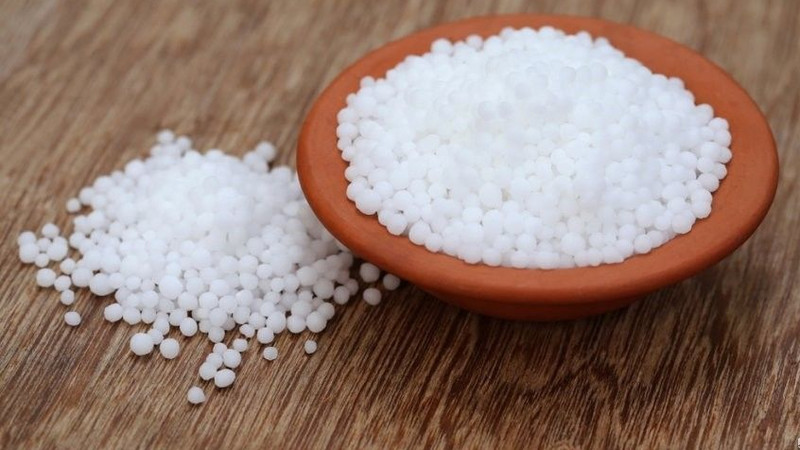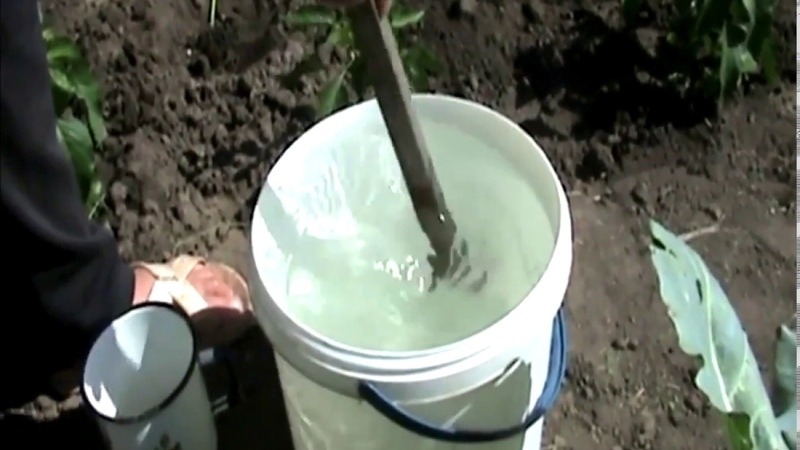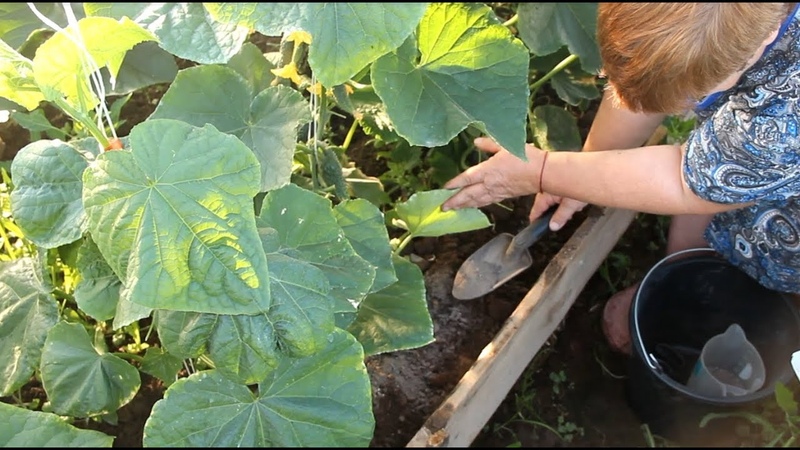When you need to feed cucumbers with urea and how to apply it correctly
Urea is a highly effective nitrogen fertilizer used for horticultural crops. But to get good results, it is important to know the features of the use of this tool. Observing the technology of feeding cucumbers with urea, you can get a high-quality and rich harvest.
The content of the article
What is urea
Urea (carbamide) is a nitrogenous fertilizer that is necessary for the full vegetation of the plant. It appears as small colorless crystals or tablets that dissolve in water. The drug is used for basic feeding or in combination with other formulations.

Why do cucumbers need it
Thanks to the treatment with urea, the plant will be protected from temperature extremes. Also, the tool allows you to delay the moment of flowering until warm weather sets in. The use of urea for foliar feeding will preserve the formed ovaries and the harvest.
Signs of nitrogen deficiency
With a lack of nitrogen in cucumbers, there is:
- slow growth;
- yellowing of leaves and stems;
- falling foliage during the growing season;
- lack of foliage formation and ovaries;
- decrease in yield;
- weak growth of side shoots.
If one or more of these symptoms are detected, urea is necessarily added.
Feeding efficiency
There are such advantages of urea for cucumbers:
- accelerated growth of the vegetative mass of plants;
- strengthened immunity;
- excellent prophylaxis against pests;
- ease of use;
- with foliar treatment, there are no burns on the leaves.
When fighting pests, urea is used if you do not want to use potent insecticides. During the spring treatment with urea, it is possible to resist the harmful effects of aphids and weevils, suckers and apple blossom beetles.
How to prepare a feeding solution
Urea is used dry or diluted. It has excellent solubility in many liquids, including water. To prepare a liquid solution, the drug is diluted with water - the proportions depend on the feeding method.

reference... If the instructions indicate the dosage in grams, then you need to take into account that in 1 tbsp. l. contains 10 g, and in an ordinary glass - 130 g.
Feeding instructions
The dosage of the drug and the frequency of its introduction are determined taking into account the method of feeding and the method of growing cucumbers - in a greenhouse or open field.
Foliar feeding with urea
Foliar processing of cucumbers occurs in several stages:
- Soil preparation before planting... Carried out when digging a site - urea is introduced so that the granules penetrate 7-8 cm deep into the ground. The consumption of the drug should not exceed 5-10 g per sq. m. Urea is introduced in spring and autumn.
- When sowing seeds. Fertilizer is thrown into the holes, but so that the granules do not come into contact with the seeds. Otherwise, the growth and development of plants will be delayed. For one well, 4 g of the drug will be enough.
- After the formation of the first leaves. At this stage, fertilizer is applied at the root in the form of a solution prepared from 30 g of the drug per 10 l of water. Cucumber seedlings are fed no earlier than two weeks after planting in open ground.
- When the first fruits appear... Nitrogen fertilization helps the plant to grow fruit mass faster. For maximum effect, combine urea, superphosphate and viburnum nitrate in a ratio of 30:40:20 g.
- During fruiting. Pour 13 g of urea and 30 g of potassium nitrate 10 liters of water.
The nuances of feeding in the greenhouse and open field
Diluted urea is added before flowering. The second time is fed when nitrogen deficiency is manifested. If the greenhouse has a favorable climate and frequent watering, then the foliage should have a bright green color throughout the entire fruiting period. In case of developmental disorders, for example, yellowing and curling of leaves, you can perform another top dressing, during which the leaves and soil are treated.
The solution is prepared taking into account the type of feeding:
- root - dilute 50 g of the drug in 10 liters of water;
- foliage treatment - 15 g of fertilizer per 10 liters of water.
When watering, make sure that the solution falls into the ground a few centimeters from the root system of cucumbers. It is best to process plants in the evening to avoid burns.
Why is excess nitrogen dangerous?
Although urea is good for cucumbers, if you overdo it with dressings, the drug can be harmful. This is manifested in the active growth of green mass. The leaves will turn large and dark green. The fruits may also suffer - they will be crooked, or they will not be at all.
Tips & Tricks

To get the maximum effect from the use of urea, you should adhere to the following recommendations:
- It is possible to use undiluted nitrogen fertilizer, but then dry granules are poured at a distance of 1-2 cm from the stem. It is important to prevent close contact of the plant with the active substance. After applying the product, the seedlings must be watered with water.
- When feeding cucumbers, maximum efficiency is achieved by alternating root feeding with foliar feeding with an interval of 14 days.
- Do not exceed the dosage allowed by the instruction. It is better to add more water than to exceed the amount of the drug.
Conclusion
Urea is an inexpensive and effective remedy for feeding cucumbersthat must be used wisely. You cannot get carried away with it, otherwise, instead of a rich and high-quality harvest, you can ruin the plants.
Only the correct dosage and method of application will make the cucumbers resistant to pests and saturate the soil with nutrients.